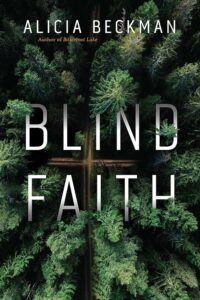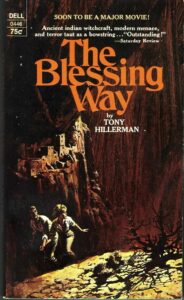
Leslie Budewitz is the author of the Food Lovers’ Village series, set in Montana, and the Spice Shop Mysteries, set in Seattle’s Pike Place Market. Both are “foodie” cozies. As Alicia Beckman, she has written two suspense novels, and she has an historical short story collection coming out later this year. Her most recent book, To Err is Cumin, the eighth book in her Spice Shop series, was published in July. She is a triple Agatha Award winner and a Macavity nominee. Welcome, Leslie!
Q: I love the Spice Shop books, partially because of the setting – something you excel at. I don’t think you live in Seattle, so where did you come up with the concept for the series?
A: I fell in love with the Pike Place Market in 1977, as a freshman at Seattle University. It was only a few years after residents voted to tax themselves to save the Market, founded in 1907, from “urban renewal,” and the place was still a little rough around the edges. I loved every sound, sight, and bite! Later, after law school, I worked downtown Seattle and shopped at the Market at least once a week. It’s changed some over the years, but it’s still vibrant, colorful, and dedicated to the mission of connecting shoppers and food producers – along with the artists, craftspeople, and shopkeepers. I moved back to Montana, my home state, 30 years ago, but I try to visit once every year or two, for research. And by research, you know I mean eat!
Q: Reading through your bio, it doesn’t look like you were ever a shop owner, but boy have you nailed it. I had a shop in a downtown for 26 years and all the stuff you talk about – parking, the community of merchants, the changes that confound long time “townies” – are all very true. Pepper does get out of her shop a bit more than I was ever able to, but it’s fiction! How did you make this part so real? I’ve read lots of “shop” mysteries that don’t get it right, so kudos.
 A: Oh, gosh, thanks! I worked retail in high school and college – in a bookstore! Second favorite job, after writing. That helps, as does living in a small town and knowing a lot of shopkeepers and gallery owners. (Jewel Bay, the Food Lovers’ Village, is based on my real town, Bigfork, Montana.) Over the years, I’ve done launches, signings, and holiday events in lots of shops and galleries, a great opportunity to peek behind the curtain! In Seattle, Market shopkeepers and artists have talked to me, too. A trip downtown is never just an errand for me – I’m always watching, listening, and drinking in the stories people tell me!
A: Oh, gosh, thanks! I worked retail in high school and college – in a bookstore! Second favorite job, after writing. That helps, as does living in a small town and knowing a lot of shopkeepers and gallery owners. (Jewel Bay, the Food Lovers’ Village, is based on my real town, Bigfork, Montana.) Over the years, I’ve done launches, signings, and holiday events in lots of shops and galleries, a great opportunity to peek behind the curtain! In Seattle, Market shopkeepers and artists have talked to me, too. A trip downtown is never just an errand for me – I’m always watching, listening, and drinking in the stories people tell me!
Q: Can you talk about the love life and development of your character, Pepper? Her love life has a real depth to it and makes her character more three dimensional.
A: My first cozy series, the Food Lovers’ Village mysteries, feature Erin Murphy, a 32 year old who is single and looking when she returns home to Jewel Bay, Montana to take over her family’s struggling business. That return home is a common story – it was mine – and I enjoyed exploring it through a much younger woman. When I created Pepper, I deliberately made her different – still running a food-related retail shop, but 42, divorced, and a native Seattleite. When we first meet her, she’s still feeling a little raw – her husband, a bike cop whose beat includes the Market, cheated on her, and when another man does the same, it’s rough. She takes a chance with a fisherman she meets at the end of book 3, Killing Thyme, and I’m so glad she did. From the notes I get, readers are happy about that, too!
Q: You write another series as well, the Food Lovers’ Village series. Both series center on delicious sounding food – I’m often hungry after reading one of your books, as well as wondering why Pepper doesn’t weigh 300 pounds with all the pastry she seems to put away. Can you talk about your love of food? As well as the spices in your spice shop books? They are a fascinating element.
A: I forget whether it’s Pepper or Erin (in the Village series) who says running in circles and jumping to conclusions is great exercise! Plus Pepper climbs all those steps in the Market and takes Arf for walks. I should follow her lead better than I do!
I did not grow up in a foodie family, though my late mother was an extraordinary baker of pies and Christmas cookies. The Market played a big role in spurring my love of food. Near the entrance is Market Spice, a cramped, fragrant shop that serves sample cups of spice tea. I loved grabbing a slice of pizza, scanning magazine covers at the news stand – hands off until I finished eating – then walking down for a cup of tea and searching out a cookie or another treat. When I started teaching myself to cook, I knew just where to go for inspiration – and for herbs and spices! There’s now a second shop just below the Market, World Spice, that’s also been a great inspiration.
Another is travel. Mr. Right and I love coming home and recreating dishes we’ve had – beouf Bourguignon in Paris, tiramisu and handmade gnocchi in Florence, Indian butter chicken in Seattle, and more! It’s great fun to include in the books and share them at Mystery Lovers’ Kitchen, a group blog. One more form of storytelling.
Q: I was also reading through your blog, and I know you contributed to Phyllis Betz’s Writing the Cozy Mystery. I like that she takes this genre so seriously, and I like the topic of your essay: Social Issues in the Cozy. Can you talk about that a little bit?
A: The cozy is often considered the lighter side of mystery – I call it comfort food – but that doesn’t mean we have to shy away from some of the tougher stuff. People are social and people have issues! In the essay, I describe a social issue as “an external force, an overarching problem of the larger world, that invades a community and harms individuals and relationships.” Examples in my books include homelessness, domestic abuse, anti-immigrant bias, and the impact of the pandemic on shopkeepers. I like to think that showing readers how my own characters approach these issues – sometimes better than others — can help them deal with challenges in their own lives and communities. Of course, balance is key – they often arise in subplots or ongoing relationships. My goal is to tell the truth, gently.
Q: You have a short story collection coming out this year which is historical. What can you tell me about that book?
A: All God’s Sparrows and Other Stories: A Stagecoach Mary Fields Collection, coming Sept 17, tells the story, in fiction, of a real-life woman, Mary Fields, who was born into slavery and spent the last 30 years of her life, 1885-1914, in Montana. She had a close connection to Mother Amadeus Dunne, Mother Superior of the Ursuline nuns who ran schools in Montana, and both women have long fascinated me. The title story, “All God’s Sparrows,” won the 2018 Agatha Award for Best Short Story. Writing about her has been a challenge and an honor – I love history, but am not trained in it – and I hope readers love her as much as I do.
 Q: I also wonder about your fledging suspense novel career as Alicia Beckman. What’s it like to write in such different genres? Or do you not feel they are that different? A good cozy certainly has elements of suspense.
Q: I also wonder about your fledging suspense novel career as Alicia Beckman. What’s it like to write in such different genres? Or do you not feel they are that different? A good cozy certainly has elements of suspense.
A: Every novel has a little mystery and suspense in it, right? That’s what keeps us reading. The challenge was less the shift in genre, and more in writing a standalone when I was used to writing a series. Both Bitterroot Lake and Blind Faith are set largely in Montana, and they let me explore truths and push edges, telling stories that don’t fit the conventions of a cozy or in a series. I hope to write more.
Q: What’s your definition of a cozy?
A: The cozy is the ultimate amateur sleuth mystery. The protagonist is an intelligent, independent-minded woman (usually), often emerging from loss or grief. She’s deeply involved in the community, whether it’s a small town, a suburb, or in the urban cozy, a community within a community. Often, she has a job or runs a business that fosters that sense of connection. When a crime threatens the people and places she loves, she uses her skills, her knowledge, and her relationships to ask questions and make connections that law enforcement can’t.
Crime damages the social fabric. While law enforcement is charged with restoring external order by making an arrest and prosecuting, the cozy protagonist restores the social order.
Unlike the protagonists of noir or hard-boiled crime fiction, the cozy protagonist sees the world in a positive light. She believes most people are good and care about each other, and that one person can make a difference. She’s fully engaged with what’s going on around her. So it’s only natural that her view of the world will on occasion compel her into action, investigating crime and probing its causes and effects.
Q: Can you name a book that was a transformational reading experience for you?
 A: So many! But when it comes to mystery, I have to mention Tony Hillerman. I was a young lawyer driving around western Montana listening to books on tape – and they were on tape then. The Missoula County Library had a lot of mysteries and I loved them – Ellis Peters’ Brother Cadfael series (which Pepper also loves), Elizabeth Peters, Sue Grafton, Sara Paretsky, and more. But Hillerman showed me I could set books right where I lived – at the time, on an Indian reservation, although I am not a tribal member – and that readers would be interested. And that was transformational.
A: So many! But when it comes to mystery, I have to mention Tony Hillerman. I was a young lawyer driving around western Montana listening to books on tape – and they were on tape then. The Missoula County Library had a lot of mysteries and I loved them – Ellis Peters’ Brother Cadfael series (which Pepper also loves), Elizabeth Peters, Sue Grafton, Sara Paretsky, and more. But Hillerman showed me I could set books right where I lived – at the time, on an Indian reservation, although I am not a tribal member – and that readers would be interested. And that was transformational.
Q: Finally – what’s next? You are one busy lady!
A: I’m wrapping up revisions on the 9th Spice Shop mystery, tentatively titled Lavender Lies Bleeding, due out in July 2025. I’ve learned a lot about lavender. And oh, what I’ve discovered about Arf, Pepper’s Airedale, who continues to be a reader favorite!
Thanks, Robin, for terrific questions, and for all you do to connect readers with a good book!